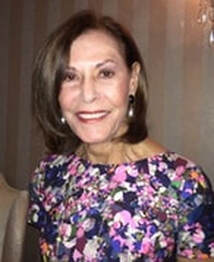 How many of you have ever taken a selfie with friends and posted it on Instagram? Millions of people carry their cell phones with them all the time just in case they get a call or email. But we also use the camera on our iphones to record our day-to-day lives, sometimes exaggerating for affect. Did you know that the first selfie was taken in 1839 by Robert Cornelius, an American pioneer in photography? He had to uncover the lens, run to be in the photo and then go back to replace the lens cap. There is a copy of his selfie etched onto his gravestone. In 1913 the Grand Duchess Anastasia of Russia was only thirteen when she took a picture of herself in the mirror with a Kodak Brownie camera and sent it to a friend. In the 1970s instant cameras made it easier for amateur photographers to take photos with instant results. And digital cameras thirty years later made it even easier. When did the word selfie become a common word in the English language? I first heard it from my granddaughter, now thirteen-year-old Clara, who asked me to take a selfie with her on her smart phone. That was only about three years ago but by then “selfies,” especially by teenage girls, had flooded the internet. By 2017, social media, such as Facebook, Instagram and Snapchat, all of which encouraged the practice, reported over 800 million monthly users of their selfie promotion app. Features of this selfie phenomenon include apps that allow users to alter their appearance, sometimes in both hilarious and unflattering ways. In 2013 the Oxford English Dictionary anointed the selfie word of the year, making it officially worthy of a spot in our vocabulary. Here is their definition. “A photograph that one has taken of oneself, typically one taken with a smartphone or webcam and shared via social media.” Cindy Sherman, an artist who uses photographs as her medium, just as others might use paints and brushes, has made a career of using herself as the model, the photographer, the director and the costumer of her artwork. As a child she loved dressing up, disguising herself with make-up and clothes she collected at Goodwill or secondhand shops. When she grew up, she still liked playing dress-up and at art school, started photographing herself posed in various roles. Her first photographs in black and white, grainy images she meant to be faded and imperfect, came out in 1977. She was in her twenties, living in New York, working as a receptionist in an art gallery. As a clown, a teen queen, a society matron, a biker, and many other characters in elaborate costumes, she mainly explored roles of women in America’s cultural landscape. The art world took notice of these sixty-nine black-and-white prints of young women, who each seemed caught in an uncomfortable or scary moment. Sherman’s career has moved forward with fame and fanfare ever since. Two summers ago she took her private Instagram account public. Tens of thousands of followers signed on to watch Sherman’s self-portraits, wildly distorted headshots of herself. Instead of masquerading with fake noses and lips, thick make-up and wild get-ups, she used Facetune, Perfect365, and YouCamMakeup to change the shape of her face, the color of her eyes, her hair and her complexion. The results were both hilarious and frightening. How did she start on this new quest? She says she was lying around for weeks after an injury and just started playing around with her iphone, taking a look at some apps friends had told her about. The results, she says, are not competing with her serious art. She’s not a perfectionist about these selfies as she is in her studio. But selfies freed her up to experiment. They allowed her to imagine the images of these molded and sculpted, at times grotesque, at other times fetching portraits going out into cyber space. She envisioned them arriving onto thousands of screens and devices, each time making us all wonder yet again, “Who is the real Cindy Sherman?” “Who is the real me?” 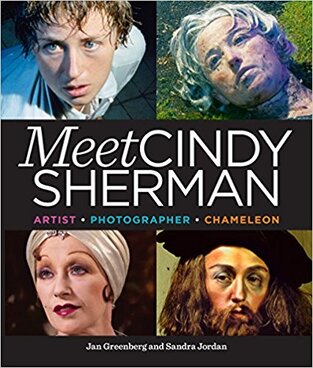 Jan Greenberg's latest book (with Sandra Jordan) is Meet Cindy Sherman: Artist-Photographer-Chameleon. They have created an unconventional biography, that much like Cindy Sherman's famous photographs, has something a little more meaningful under the surface. Infusing the narrative with Sherman's photographs, as well as young people's first impressions of the photographs, this is a biography that goes beyond birth, middle age, and later life. It's a look at how we look at art.
0 Comments
 “Where am I?” The smiling young pilot was apparently nonplussed. He had landed at Dublin’s airport without a permit – or even a passport – and was now confronting several frowning custom officers. “I took off from New York with the intention of flying to Los Angeles,” he explained. “After twenty-six hours coming down through the clouds I was puzzled to see water instead of land. I must have misread my compass and followed the wrong end of the needle.” The Irish, never averse to a good yarn, looked at his primitive plane and cheered him for his audacity. When word of his remarkable flight reached the United States, the pilot, Douglas Corrigan, became known as “Wrong Way” Corrigan. The story of Corrigan, an Irish-American mechanic, has been called an Irish fairy tale, an impish yarn spun with a straight face. It unfolded in 1938 but really began when Corrigan, at age twenty, worked on the team that built The Spirit of Saint Louis, the plane that took Charles Lindberg across the Atlantic. Lindberg became Corrigan’s hero. His dream: to make that same flight himself. But Corrigan was just an ordinary guy struggling to make ends meet. Still, he managed to get a pilot’s license, and began flying in his spare time. In 1931 he bought his own plane. It was a battered old machine, but Corrigan loved it, and radically changed it, so that, one day, he would be able to duplicate his hero’s transatlantic flight. He was set to go – except for one major obstacle: more stringent regulations for trips overseas. Applying for a government permit, he was turned down because his plane was too old. Then, in 1938, he got a license for flights between Los Angeles and New York. Seeing him him take off for Los Angeles, people wondered why he headed northeast instead of west. The world laughed - an unlikely hero, a mirthful, courageous individual who thumbed his nose at authority. Back in New York, Corrigan was treated to a ticker-tape parade on Broadway. A nationwide tour followed. He met with President Roosevelt, received membership in the Liar’s Club in Wisconsin, was hailed as “Chief Wrong Way” by a Native American tribe, showered with compasses, and given a watch that ran backward. Asked about his flight, his response was always the same: a grin and “Man, I didn’t mean to do this at all.” 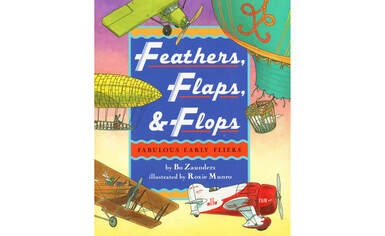 Bo Zaunders has written four nonfiction books for children and illustrated two. He is also a photographer specializing in food and travel. Like Corrigan, he loves adventures. You can find Feathers, Flaps & Flops in the iNK Books & Media Store. |
The Nonfiction Minute returns on 9/12/20.We publish the Minutes for the coming week on Saturdays so teachers can make plans and we update the Minute for each day, so a new Minute appears at the top of the queue. ArchivesCategories |

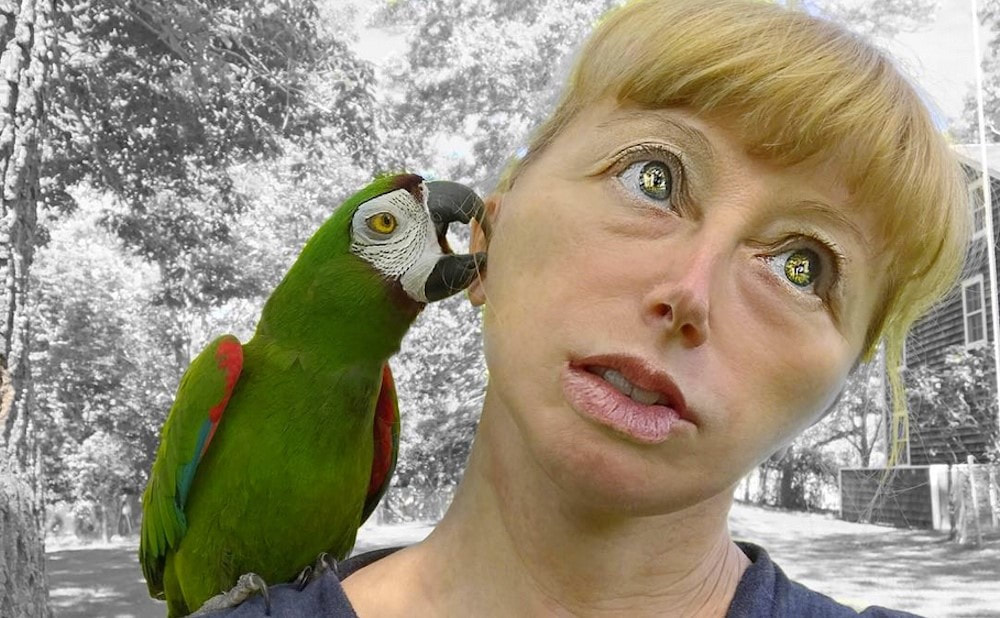



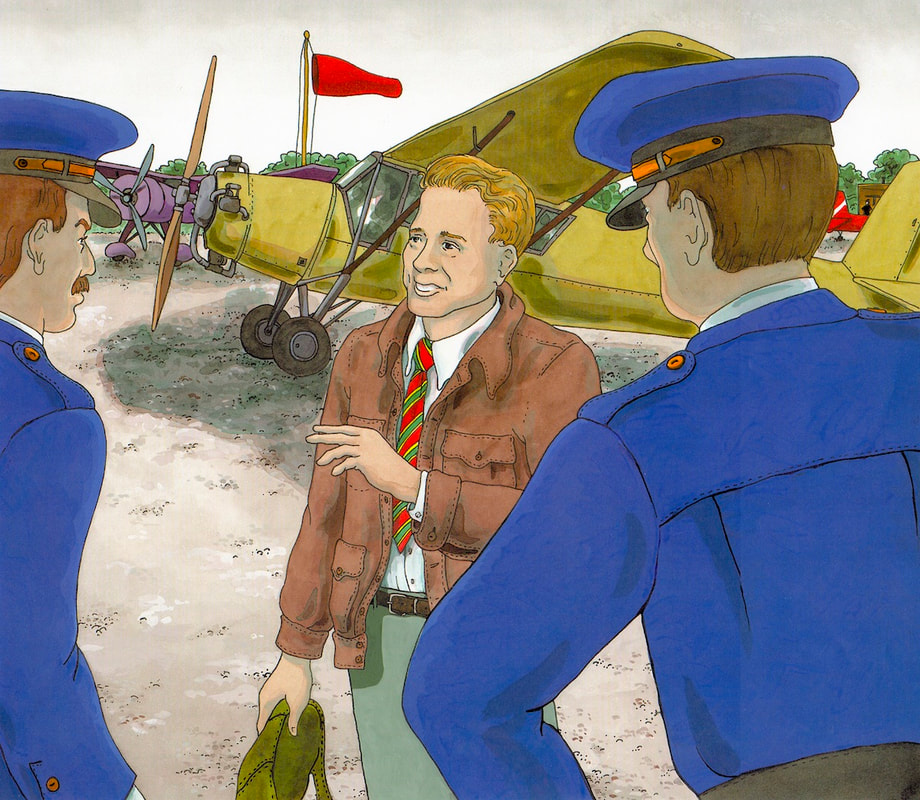

 RSS Feed
RSS Feed
